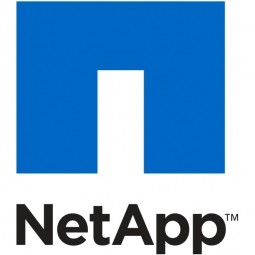
Technology Category
- Infrastructure as a Service (IaaS) - Hybrid Cloud
- Infrastructure as a Service (IaaS) - Public Cloud
Applicable Industries
- Buildings
- Education
Applicable Functions
- Human Resources
- Quality Assurance
Use Cases
- Clinical Image Analysis
- Intelligent Packaging
Services
- Cloud Planning, Design & Implementation Services
- Training
The Customer
ITOCHU Techno-Solutions
About The Customer
The customer in this case study is ITOCHU Techno-Solutions (CTC), a company that operates the Technical Solution Center (TSC), a comprehensive facility that allows client companies to evaluate and verify systems to be introduced using actual equipment. CTC is dedicated to providing a multi-vendor comprehensive verification facility that offers full technical support from experienced and dedicated engineers. The company conducts approximately 1,200 performance evaluations and functional tests annually using the latest system products. In recent years, CTC has seen a significant increase in the number of AI/deep learning verification projects and opportunities to verify data and service integrations between the TSC system and public cloud services.
The Challenge
ITOCHU Techno-Solutions (CTC) operates the Technical Solution Center (TSC), a comprehensive facility that allows client companies to evaluate and verify systems to be introduced using actual equipment. It is Japan's largest verification facility for a multi-vendor environment and offers full technical support from experienced engineers. In recent years, the TSC has seen a significant increase in the number of AI/deep learning verification projects, and opportunities to verify data and service integrations between the TSC system and public cloud services like AWS, Microsoft Azure, and Google Cloud Platform. This growing need for verification of hybrid cloud and AI/deep learning drove CTC to create a new verification environment, AI_LAB, in late 2018. AI_LAB was designed to verify large-scale AI utilization and to build learning models. However, the challenge was to establish a system that could handle the advanced verification requirements of AI/deep learning.
The Solution
To meet the challenge, CTC adopted the NetApp ONTAP AI integrated system, jointly developed by NetApp and NVIDIA, for the AI-dedicated verification environment AI_LAB. The system integrates the NVIDIA DGX-1 AI, incorporating eight Tesla V100s and the NetApp AFF A800 high-end all-flash array, forming a reference architecture optimized for AI/deep learning applications. The configuration adopted for CTC's AI_LAB includes the NVIDIA DGX-1 cluster with 4 nodes/32 GPUs and one NetApp AFF A800 system provided with a high-speed connection by two 100 GbE switches. The NetApp AFF A800 equipped with NVMe SSD can supply training data to the GPUs at an extremely high rate, making it possible to take full advantage of the petaflops computational performance of the DGX-1 cluster. AI_LAB also integrates with public cloud services such as AWS, Azure, and GCP, allowing customers to easily build an AI/deep learning data pipeline by connecting the on-premises verification environment in AI_LAB to the public cloud. Furthermore, AI_LAB provides an environment with the capability to meet customers’ every need, from large-scale verification that makes full use of 32 GPUs to small-scale tests with 1 GPU.
Operational Impact
Quantitative Benefit

Case Study missing?
Start adding your own!
Register with your work email and create a new case study profile for your business.
Related Case Studies.

Case Study
Energy Saving & Power Monitoring System
Recently a university in Taiwan was experiencing dramatic power usage increases due to its growing number of campus buildings and students. Aiming to analyze their power consumption and increase their power efficiency across 52 buildings, the university wanted to build a power management system utilizing web-based hardware and software. With these goals in mind, they contacted Advantech to help them develop their system and provide them with the means to save energy in the years to come.

Case Study
Intelligent Building Automation System and Energy Saving Solution
One of the most difficult problems facing the world is conserving energy in buildings. However, it is not easy to have a cost-effective solution to reduce energy usage in a building. One solution for saving energy is to implement an intelligent building automation system (BAS) which can be controlled according to its schedule. In Indonesia a large university with a five floor building and 22 classrooms wanted to save the amount of energy being used.

Case Study
Powering Smart Home Automation solutions with IoT for Energy conservation
Many industry leaders that offer Smart Energy Management products & solutions face challenges including:How to build a scalable platform that can automatically scale-up to on-board ‘n’ number of Smart home devicesData security, solution availability, and reliability are the other critical factors to deal withHow to create a robust common IoT platform that handles any kind of smart devicesHow to enable data management capabilities that would help in intelligent decision-making

Case Study
Commercial Building Automation Boosts Energy Efficiency
One of the challenges to building automation is the multitude of non-interoperable communications protocols that have evolved over the years. Buildings have several islands of automation. Bridging the islands of different automation without losing the considerable investment in each specialized control network is the main focus in this solution.

Case Study
Protecting a Stadium from Hazardous Materials Using IoT2cell's Mobility Platform
There was a need for higher security at the AT&T Stadium during the NFL draft. There was a need to ensure that nuclear radiation material was not smuggled inside the stadium. Hazmat materials could often be missed in a standard checkpoint when gaining entry into a stadium.




